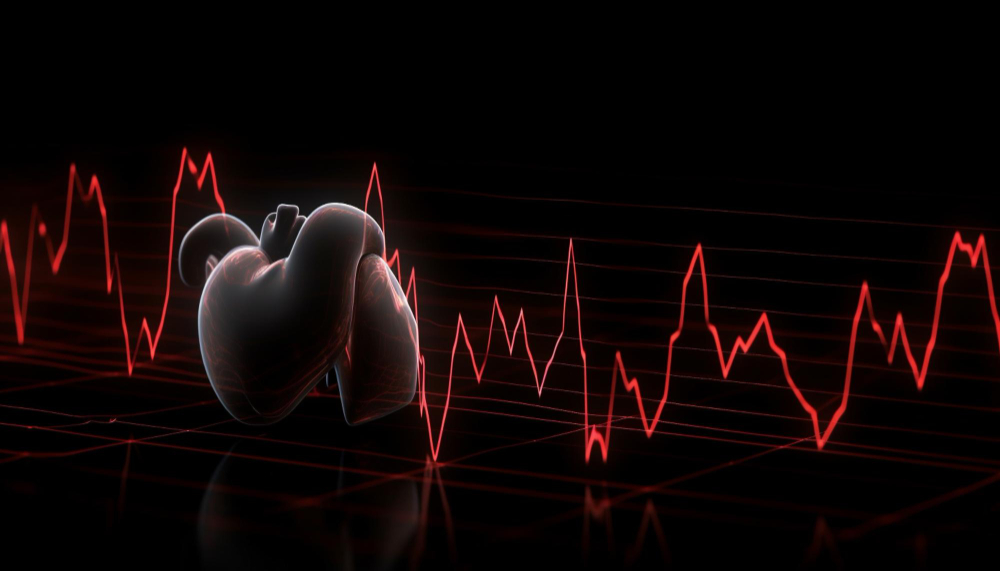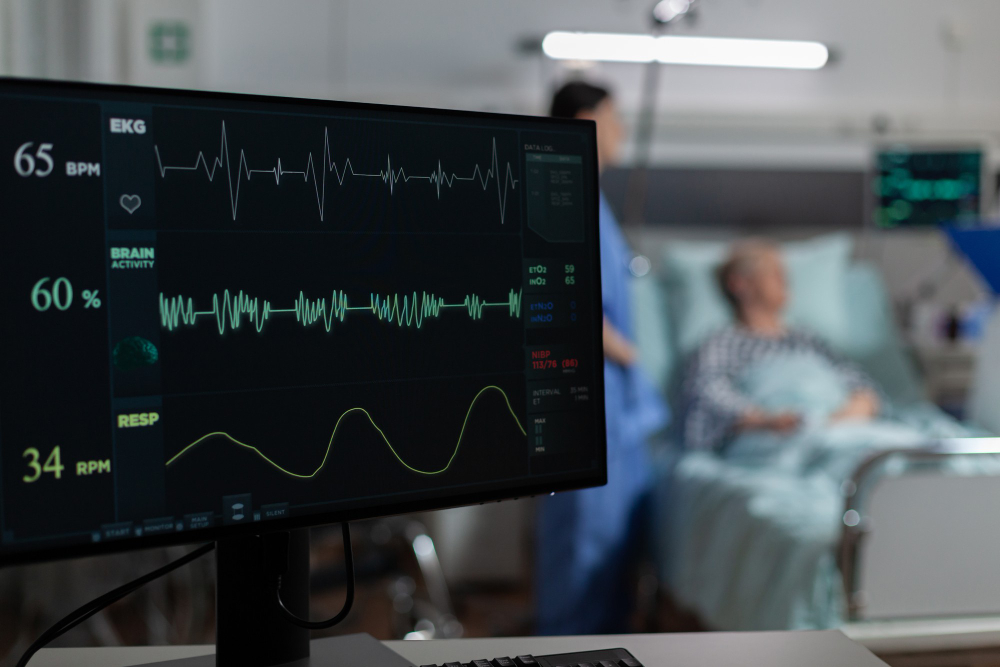Arrhythmia
When your heart rhythm is abnormal, it is called arrhythmia. This can mean that your heart beats too quickly while you are resting or that it doesn’t follow a regular pattern. Depending on the severity, arrhythmias can be harmless or serious and may or may not have symptoms. Treatment options for arrhythmias vary and some may not require any treatment at all. The outcome of arrhythmias also differs depending on the type of arrhythmia.

Types of Arrhythmias
- Atrial Fibrillation
- Atrial Flutter
- Bradycardia
- Conduction Disorders
- Premature Contraction
- Tachycardia
- Ventricular fibrillation
- Other Rhythm Disorders
- Types of Arrhythmias in Children
The heart, which is slightly bigger than a fist, is a powerful and muscular organ that functions as a pump. It’s responsible for circulating blood throughout the entire body.
What Are the Symptoms of Arrhythmia?
An irregular heart rhythm may not have any noticeable symptoms, but your physician can detect it through a physical examination.
If you have symptoms, they may include:
- The sensation of an irregular heartbeat, including the feeling of missed beats, rapid fluttering, or sudden thumping, is referred to as palpitations.
- Pounding in your chest
- Dizziness or feeling lightheaded
- Fainting
- Shortness of breath
- Chest pain or tightness
- Weakness or fatigue (feeling very tired)
- Anxiety
- Blurry vision
- Sweating
How Are Arrhythmias Treated?
The type of arrhythmia you have will determine the treatment your doctor suggests, which may include multiple options.
Medications
There are medications available for treating irregular heartbeats, which are:
- Adenosine (Adenocard)
- Atropine (Atropen)
- Beta-blockers
- Calcium channel blockers
- Digoxin (Digitek, Digox, Lanoxin)
- Potassium channel blockers
- Sodium channel blockers

Therapies
Apart from medication, certain individuals require therapies to manage or remove abnormal heartbeats. Your medical practitioner will ascertain the most suitable treatment for you and converse about its advantages and drawbacks with you.
Therapies include:
- Cardioversion involves the use of an electrical signal which synchronizes your heart, thus enabling it to restart in its regular rhythm.
- In Catheter ablation, a small part of tissue inside the heart that causes unusual heart rhythm is treated by sending high-frequency electrical energy through a catheter. This procedure is capable of treating atrial flutter, atrial fibrillation, some atrial and ventricular tachycardias along with most SVTs by disinfecting the abnormal rhythm’s pathway.
- The procedure of pulmonary vein isolation is where scars are formed in circular shapes to separate specific regions that have the potential to trigger atrial fibrillation. This technique is beneficial for individuals who experience frequent, paroxysmal, or persistent atrial fibrillation.
Heart surgery for arrhythmias
The maze method is a surgical technique used for the treatment of atrial fibrillation. During this procedure, your surgeon creates a maze-like pattern of incisions in the upper chambers of your heart with the aim of limiting the path of your heart’s electrical signals. After the operation, some individuals may require a pacemaker.
If you have other types of heart disease, your doctor may suggest alternative treatments like a coronary bypass.
Devices
In the electrophysiology lab, a cardiologist may implant specific instruments to manage heart arrhythmia, such as:
- A permanent pacemaker is a gadget that transmits minor electrical signals to your heart, ensuring that it beats at a standard pace and prevents it from slowing down excessively.
- The Implantable cardioverter defibrillator (ICD) is a device that regularly checks your heart rhythm and gives your heart muscles energy to beat normally when it detects a very fast or abnormal heart rhythm. It is used to treat two dangerous heart rhythms, ventricular tachycardia and ventricular fibrillation.
- Biventricular pacemakers and defibrillators, also known as cardiac resynchronization therapy or CRT, aid in coordinating the contraction of the left ventricle. These devices have a lead that connects to the left ventricle, in addition to the ones connected to the heart’s right side. Those with heart failure and disorganized left ventricle contractions may require this treatment.

Complications of Arrhythmias
If left untreated, an irregular heartbeat has the potential to give rise to hazardous complications such as:
- Alzheimer’s disease and dementia are cognitive disorders that can occur due to insufficient blood flow to the brain over time.
- Heart failure can occur when your heart is unable to function at its best due to numerous episodes of arrhythmia.
- In case blood remains stagnant in your atria, there is a possibility of clot formation which could lead to a stroke if the clot reaches your brain.
- Sudden cardiac arrest may occur when V-fib triggers a cessation of heart activity.
Prevention
Preventing heart problems, such as arrhythmia, is not always achievable.
Possible paraphrased version: There are several actions that individuals can take to decrease their chances of experiencing negative outcomes, such as:
- Looking for assistance to address any pre-existing medical issues and adhering to the prescribed course of treatment.
- doing regular exercise
- To stay away from negative health effects, it’s advisable to refrain from both tobacco consumption and recreational drug use.
- limiting alcohol consumption
- Consulting a physician prior to taking any medication or dietary supplements.
- following a varied and nutritious diet
When will I start feeling better after the treatment is given?
It could require some time to discover the appropriate medication and dosage to treat your arrhythmia. The recovery period after certain surgeries or procedures may last for weeks or even months. You could experience arrhythmias for some weeks while recovering from procedures like catheter ablation or pulmonary vein isolation. Your healthcare provider can inform you of what to anticipate in your particular case.
Treatment in Türkiye:
The medical staff of surgical teams, doctors and consultants in Rehab Türk can provide the best treatment options and free consultations – by striving to keep abreast of the latest medical technologies and methods.

